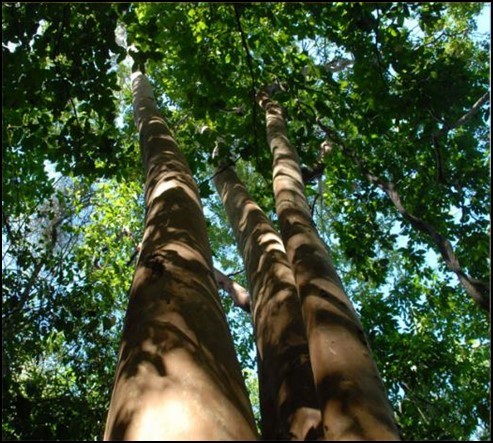
NPS Photo/South Florida & Caribbean Network
Some of the focal forest communities that can be found in the parks monitored by the network include hardwood hammocks, cypress strands and domes, pine woodlands, tropical dry forests, tropical moist forests (gallery and upland), and mangrove forests. Some rare communities are also monitored at some parks: manchineel forest at Buck Island Reef National Monument (BUIS), black mangrove woodlands at Dry Tortugas National Park (DRTO), and coastal hardwood hammocks (fan palm and mahogany) at Everglades National Park (EVER). The focal forest communities are either dominant communities within the parks or important communities to park management. These communities have developed responding to a combination of processes that have historically been present (hydrology, salinity, fire, frost, topography, aspect, soil type and depth). While they may contain areas of early succession due to fire or other disturbance, as a whole they have historically been resilient to change (as evident from peat cores, type of soil development, or lack of soil development). Areas in early stages of succession are expected to revert to the same focal forest community if processes remain the same and, thus, such stages are considered part of the focal community.
The South Florida/Caribbean Network is in the process of developing a protocol that focuses on detecting change in forest vegetation community structure and composition. Forest vegetation community structure refers to all the physical and compositional components of the community such as species composition, tree age-size class, frequency distribution, and species richness. Changes in vegetation community structure may indicate transformation of successional state, time since disturbance, eutrophication, hydro-pattern (including groundwater), water quality, fire regime, disease or insect outbreak effects, and changes in relative cover by native/non-native species.
Forest Vegetation publications
Find all monitoring reports, protocols, and resource briefs below.Source: NPS DataStore Saved Search 3791. To search for additional information, visit the NPS DataStore.
Source: NPS DataStore Saved Search 3672. To search for additional information, visit the NPS DataStore.
Last updated: March 30, 2021
